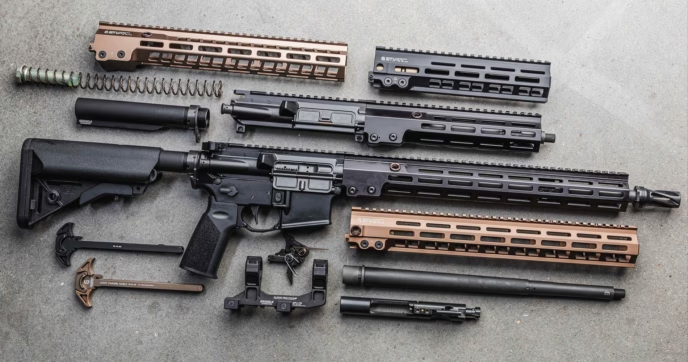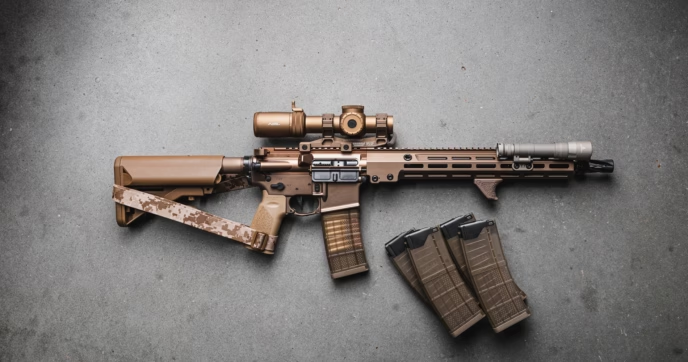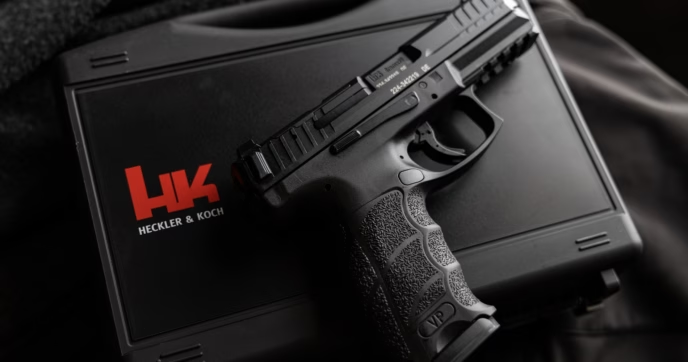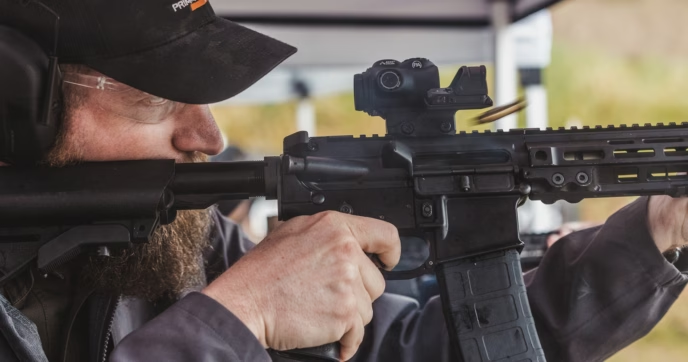Guns are loud. There are a few niche exceptions—subsonic rimfire rounds and the like—but the fact remains as a near universal truth that a gunshot is a big noise. That distinct report is, for many, one of the pleasures of recreational marksmanship, but it’s also something of a safety hazard if not guarded against appropriately.
The intensity of gunfire can be sufficient to cause immediate and permanent hearing damage, even from a single unprotected shot. Over time, repeated exposure without proper hearing protection can degrade hearing, leading to tinnitus or even deafness.
Suppressors, sometimes also referred to as silencers, offer a technological solution to this challenge. They cannot eliminate sound entirely, but they can reduce it, lowering a firearm’s signature to safer and more manageable levels. This makes them an increasingly popular choice for a muzzle device, as when combined with electronic ear protection, they can massively reduce the risk of hearing loss or damage from firearm use.
To meaningfully compare different models (as you might want to do when shopping for one, for example) we need a metric to measure just how much they dampen the sound of a gunshot. That’s where decibel ratings enter the picture.
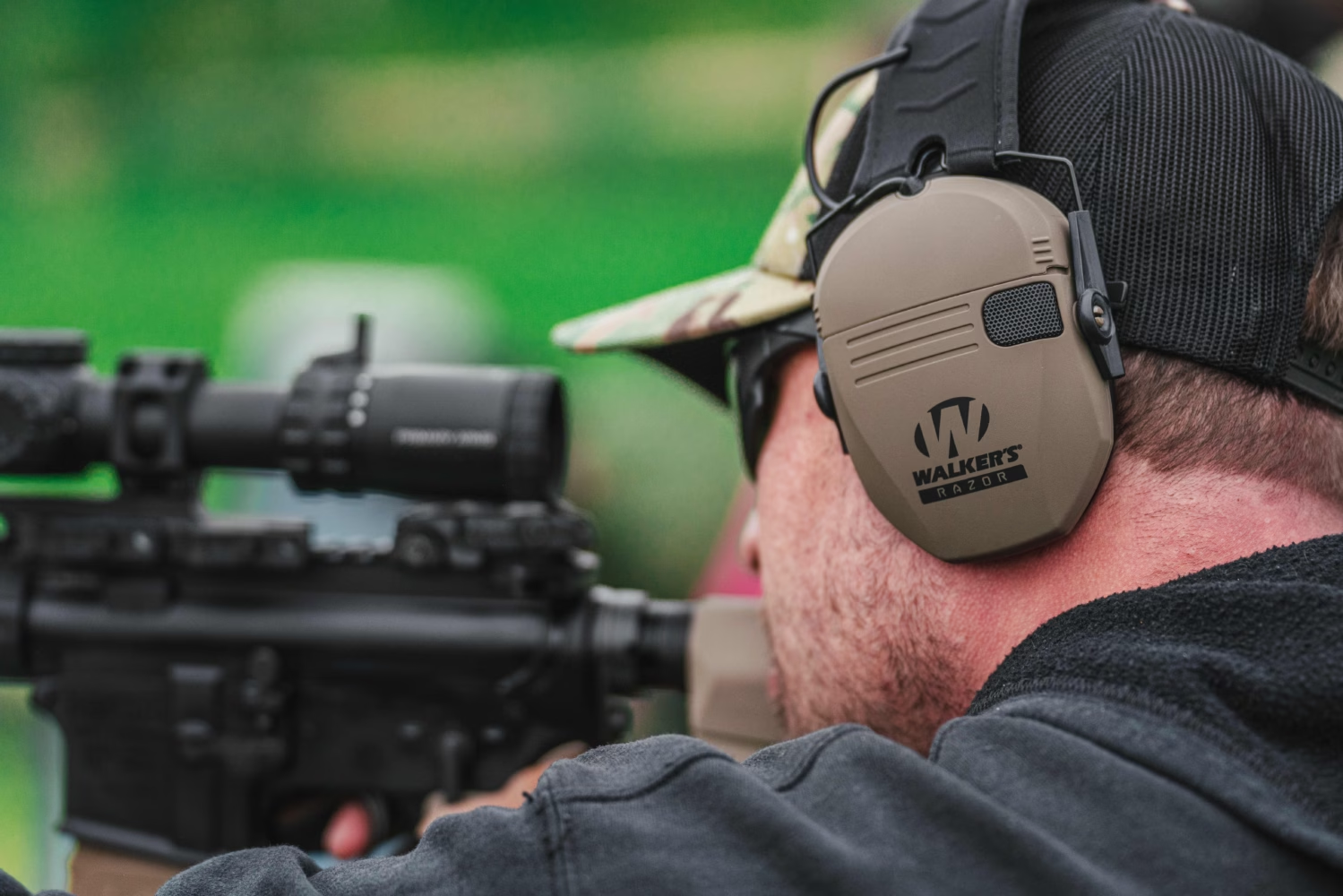
Why It Matters
The dangers of loud noise are not limited to discomfort. The human ear is an intricate and delicate structure, evolved to detect subtle vibrations in the air using thousands of microscopic hair-like cells. These cells are finite and fragile, and once damaged, they do not repair themselves. This makes hearing loss from noise exposure a permanent and irreversible condition.
The common guideline is that sustained exposure to noise above 85 decibels or a single exposure to over 240 dB can cause hearing loss. 85 dB is the typical level of sound produced by heavy traffic or a lawnmower. Gunfire far exceeds this threshold, often by more than double, meaning that a single shot from a powerful firearm can lead to damage. Nearly every firearm will exceed 85 decibels when unsuppressed, even rimfire rifles, so you should always wear hearing protection when target practicing.
Beyond personal health, there are other benefits to sound reduction. Communication is a critical aspect of all kinds of training, whether on the range, in a class, or even in a competitive or defensive use case. Excessive noise makes clear communication difficult, and hearing loss compounds this issue further. Suppressors mitigate these risks by reducing sound to safer levels, sometimes to the point where a shooter can comfortably converse without electronic protection when outdoors.
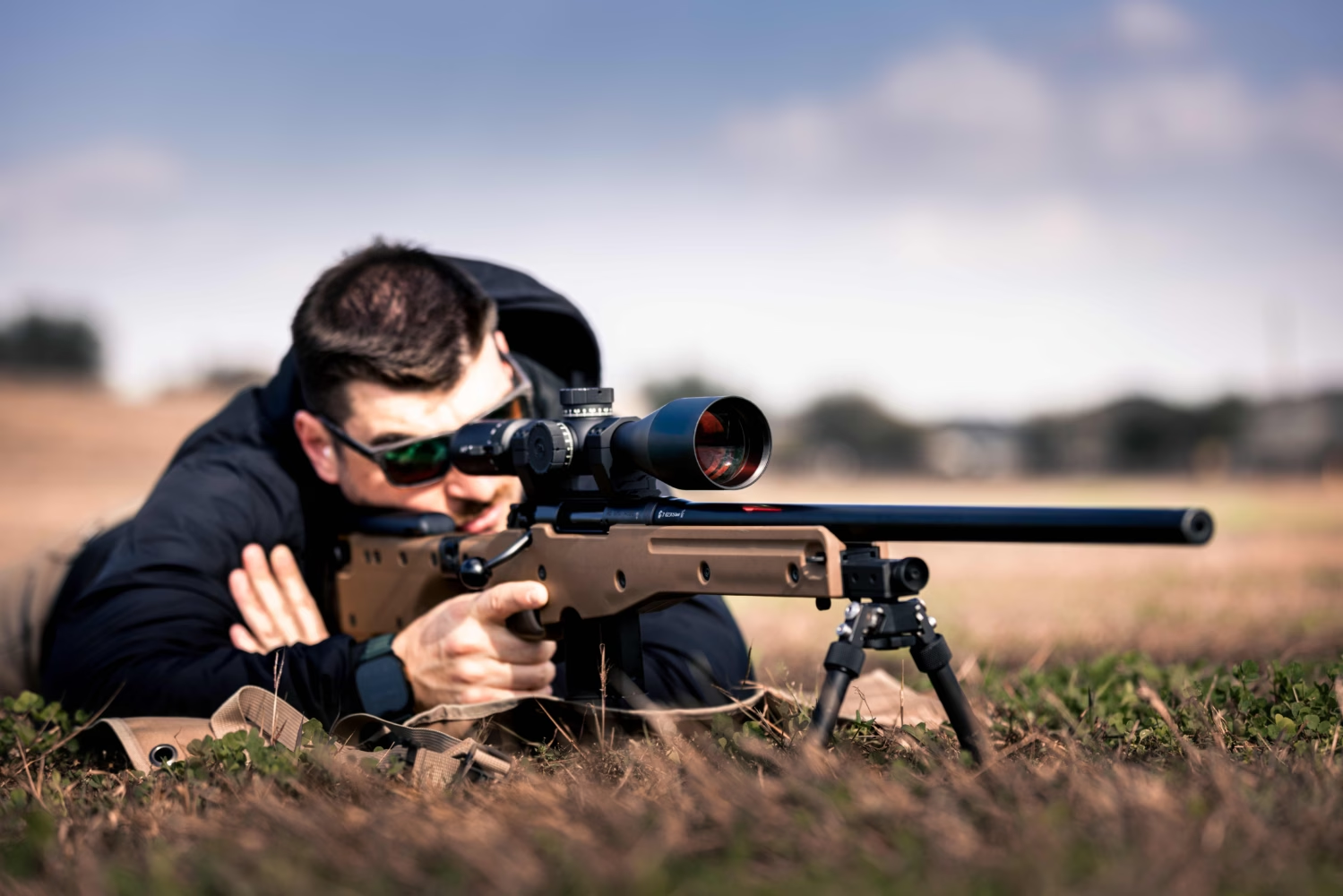
How Loud Is an Unsuppressed Gunshot?
To appreciate the benefit of rifle sound suppressors, one must first grasp the intensity of an unmoderated gunshot. Firearms operate by igniting propellant within a cartridge case, creating gases under pressures often exceeding 50,000 pounds per square inch. When the bullet leaves the barrel, these gases erupt outward, expanding rapidly to produce the familiar muzzle blast.
Sound levels vary with caliber, barrel length, and ammunition type. Small cartridges such as .22 Long Rifle typically register between 135 and 150 dB. Though often marketed as “quiet,” this is still louder than a jackhammer and well into the range capable of causing hearing loss.
A typical 9mm pistol produces around 160 to 165 dB. Intermediate rifle cartridges like 5.56x45mm NATO rise higher, often 165 to 170 dB, especially from shorter barrels where unburned powder and higher pressures create more blast. A .308 Winchester fired from a rifle can measure 170 to 172 dB, while a .50 BMG easily reaches 175 to 180 dB.
Every common firearm exceeds the safe threshold by a wide margin. Even a handful of shots without hearing protection can leave ears ringing, an early symptom of damage known as tinnitus. Over time, the cumulative effect results in permanent threshold shifts, where higher-frequency sounds are lost first.
This explains why seasoned shooters often experience difficulty hearing higher-pitched tones or understanding conversation in noisy environments. Once this loss occurs, it cannot be reversed. Preventing it requires either dedicated hearing protection or the use of suppressors to lower the danger—ideally, both.
The Basics of Decibels
To measure sound, scientists and engineers use the decibel system, abbreviated as dB. Unlike most familiar scales, the decibel system is logarithmic. This means that each increase of 10 dB represents a tenfold increase in sound intensity.
For example, a sound measuring 140 dB is not slightly louder than one at 130 dB. It is ten times more intense. At 150 dB, the intensity is 100 times greater than at 130 dB. Because of this logarithmic progression, small numerical differences in decibel ratings can represent enormous practical differences.
The human ear perceives these changes differently from raw physics. In general, an increase of 10 dB is perceived as roughly doubling in loudness, even though the actual energy level is ten times greater. Similarly, a reduction of 10 dB is usually heard as cutting the loudness in half. Even a 3 dB reduction is significant because it represents halving the energy delivered to the ear.
This is why suppressor ratings that differ by just a few decibels can still represent meaningful improvements. A suppressor that reduces a rifle’s report from 168 dB to 160 dB has reduced sound energy by a factor of more than six. To the user, the difference might feel like cutting the loudness by nearly half.
Another important factor is the standard by which decibels are measured. In firearms, sound levels are often recorded according to MIL-STD-1474D, a military testing standard that specifies microphone placement and measurement methods. However, there’s no true industry standard, nor are sound ratings governed by any regulatory process, so decibel ratings from different companies or organizations may not be directly comparable. Typically, readings are taken one meter to the left of the muzzle and at the user’s ear. These two positions capture different aspects of the sound signature, as the user’s ear may experience reflections, gas venting, and mechanical noise differently from the muzzle blast.
Understanding both the logarithmic scale and the measurement standards is essential when interpreting suppressor performance claims.
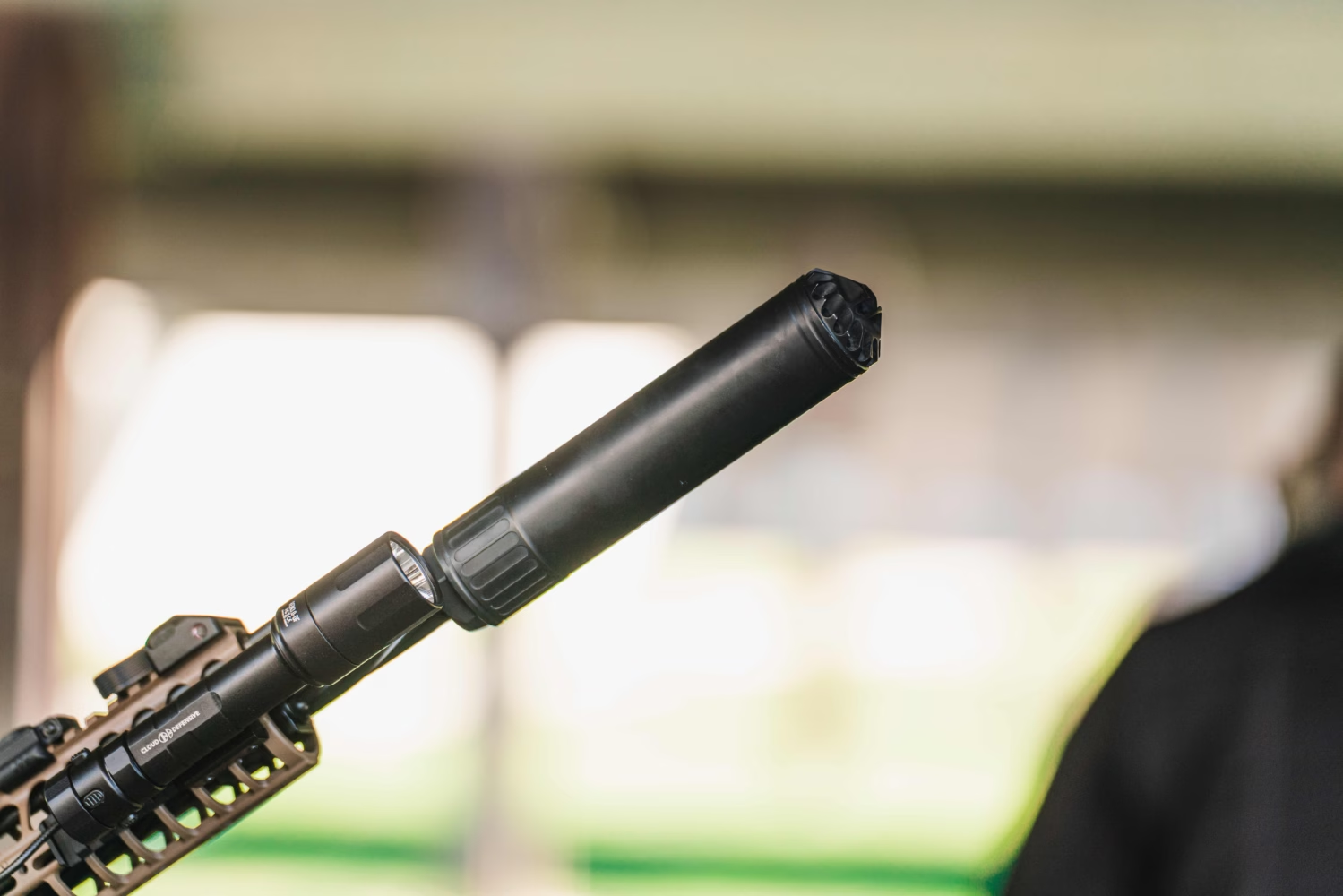
How Suppressors Work
Suppressors function on straightforward physics: controlling the expansion of gas. When a bullet exits the barrel, the high-pressure gases behind it burst outward, creating a sudden pressure differential between the barrel and the atmosphere. This rapid release is what generates the loud muzzle blast.
Inside a suppressor, a series of baffles and expansion chambers temporarily trap and redirect those gases. Instead of escaping in an instant, the gases are forced through a controlled path, cooling and slowing as they move. By the time they exit the suppressor, their pressure is lower and their expansion less violent. This reduction in pressure is what lowers the sound signature.
Baffle design plays a central role in suppressor efficiency. Different manufacturers employ cones, K-baffles, monolithic cores, and other configurations, each with its own advantages. Materials such as stainless steel, titanium, or Inconel determine durability, especially under the extreme heat generated by rapid fire.
It is important to note that suppressors cannot eliminate all sound, which is why some users object to them being referred to as silencers—a gunshot is never going to be truly silent, although rimfire suppressors can get rather close.
If the bullet itself is supersonic, it will generate a shockwave as it travels, producing the distinctive “crack” heard downrange. This is independent of the muzzle blast and cannot be suppressed and can be sufficient to cause hearing damage on its own, even if the muzzle blast is sufficiently dampened.
Marksmen seeking maximum quiet often use subsonic ammunition, which travels below the speed of sound. While subsonic rounds sacrifice velocity and, in some cases, effective range, they pair with suppressors to produce dramatically quieter results.
However, subsonic ammunition is not commonly available or practical for all firearms. AR-15s chambered in .223 Remington/5.56x45mm, for instance, do not have commercially available subsonic ammo, as such a round would be underpowered to the point of pointlessness, and so a 5.56 silencer will never be able to make such a rifle hearing safe.
Other calibers, such as .300 Blackout, were designed in part for subsonic capability. As such, subsonic .300 Blackout ammunition is commonly available at many firearm and sporting goods stores, making a .300 Blackout silencer the first choice for those who prioritize sound suppression over all else.
Another factor is mechanical noise. Semi-automatic firearms produce sound as their actions cycle, ejecting spent cases and chambering new rounds. This sound is usually minor compared to the muzzle blast, but in highly suppressed setups, it can become the loudest element.
The net effect of a suppressor is not silence but a significant reduction in sound signature. A rifle that measures 168 dB unsuppressed may drop to 135 dB with an efficient suppressor and subsonic ammunition. While still loud, this represents a profound improvement in both safety and comfort.
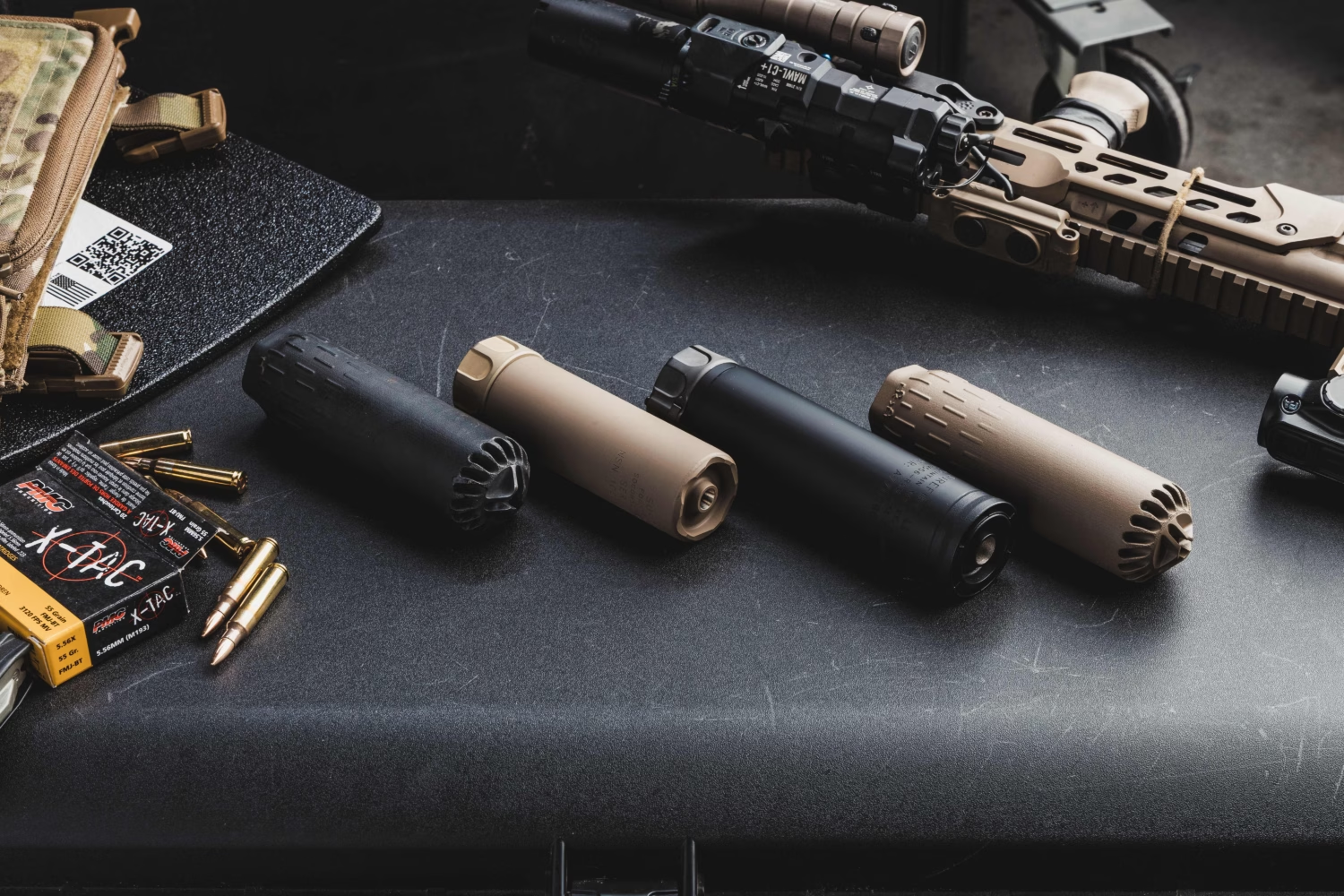
Comparing Suppressor Performance
When evaluating suppressors, decibel reduction is the first metric most buyers consider. However, there are nuances that make comparison less straightforward than it seems.
First, measurement locations matter. A suppressor may measure 135 dB at the muzzle but 140 dB at the user’s ear, especially on semi-automatic rifles, where some gases escape through the action. The ear-level reading is arguably more important, as it reflects the user’s actual experience.
Second, there is the issue of first-round pop. Because a suppressor initially contains normal atmospheric oxygen, the first shot often produces extra noise as hot gases ignite within the chamber. Subsequent shots are quieter, as the oxygen is displaced by inert gases. This phenomenon can add several decibels to the first shot.
Another complication is port pop. In semi-automatic firearms, excess gases are vented through the ejection port. This noise, combined with increased gas blowback, can make certain suppressors less pleasant to use despite good muzzle-level ratings and can often be the reason for a significant difference between muzzle and at-ear level discrepancies.
Beyond simple suppression, there are a whole host of other factors that must also be considered in choosing a suppressor.
Suppressors introduce back pressure, which can affect firearm function. Increased back pressure may accelerate wear, foul the action with carbon, or change recoil impulse. An excess of back pressure can even make a firearm cycle improperly, leading to jams. Some modern suppressors, such as certain Huxwrx suppressors, address this with low back pressure designs, which vent gases forward rather than trapping them, reducing back pressure at the expense of maximum sound suppression.
Beyond acoustics, practical attributes matter. Suppressor weight affects balance and fatigue. Length influences handling and maneuverability. Durability determines whether a suppressor can handle sustained fire from high-pressure cartridges without degradation. Mounting systems vary in security and repeatability, with quick-detach and direct-thread options each having trade-offs.
Because suppressors are expensive, regulated, and difficult to transfer once acquired, buyers should evaluate these factors holistically. The best suppressor for you may be slightly louder on paper, but offer better handling, lower back pressure, or greater longevity, making it the better choice in practice.
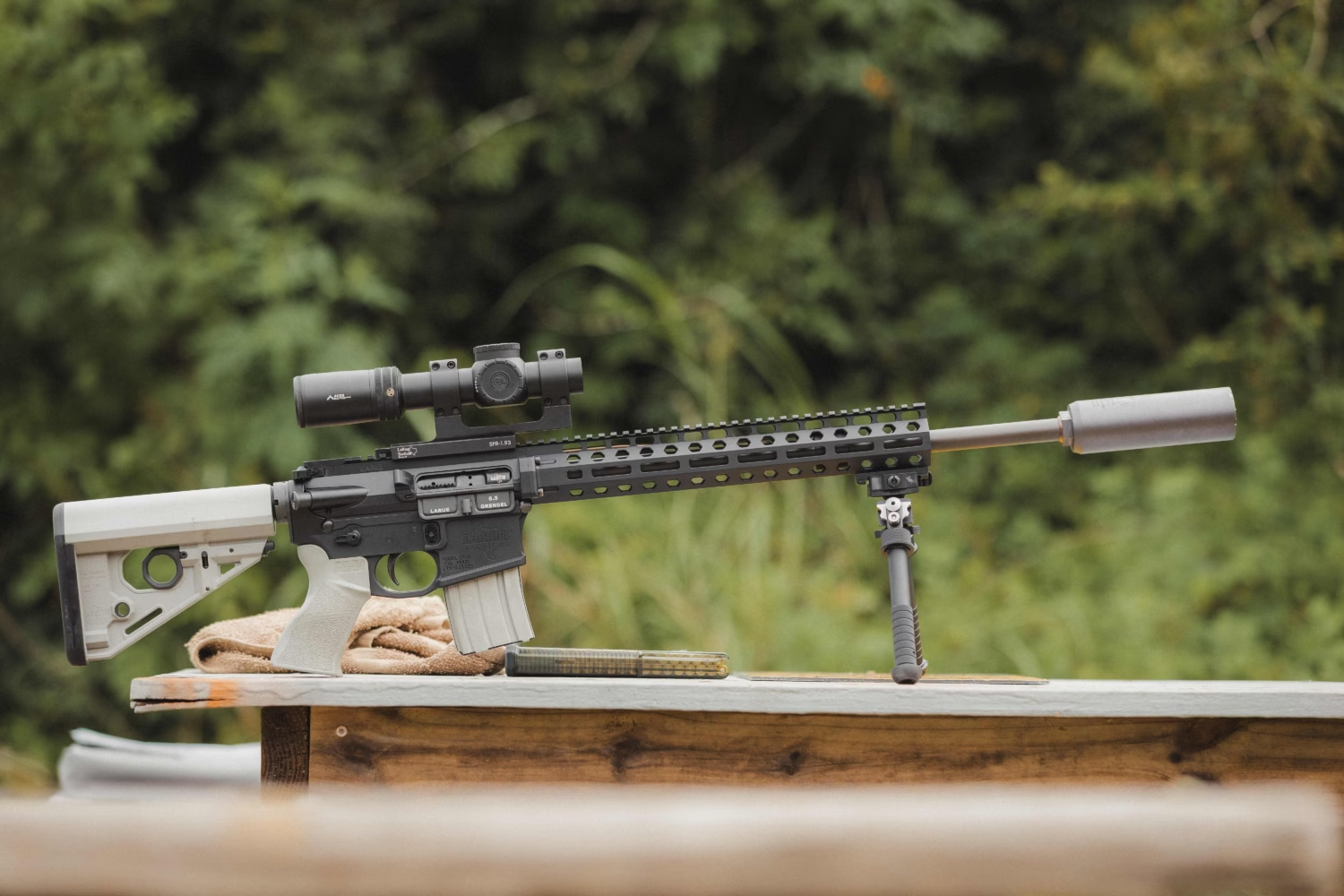
Conclusion
Suppressors are not magical devices that make firearms whisper-quiet, but they are invaluable tools for reducing the dangers of gunfire. By slowing and cooling the expanding gases that create the muzzle blast, they bring sound levels down dramatically, often enough to make shooting far safer for hearing and more comfortable overall.
Understanding the science of decibels reveals why even small reductions can be profound, and why careful interpretation of sound data is essential. Comparing suppressors requires looking beyond simple decibel ratings, taking into account ear-level measurements, back pressure, size, weight, and durability.
Firearm noise can be powerful enough to cause instant hearing damage, and hearing once lost cannot be regained. Suppressors, combined with proper hearing protection, offer one of the most effective ways to safeguard this vital sense. Given the regulatory environment, purchasing a suppressor is a significant investment—one that should be guided by knowledge rather than assumption.
By mastering the science behind firearm sound reduction, users can make informed decisions, protecting both their hearing and the enjoyment of their time on the range.
